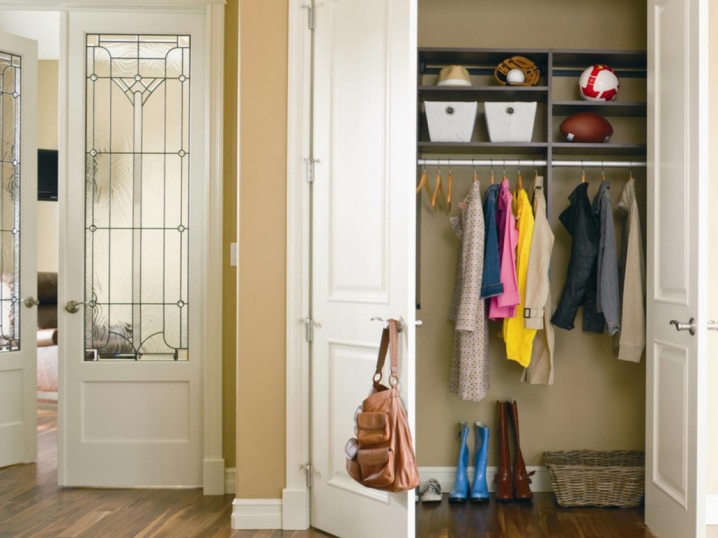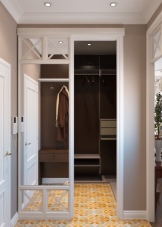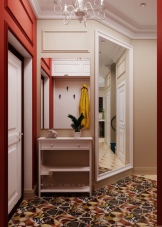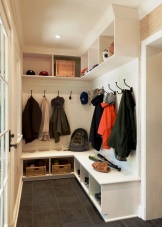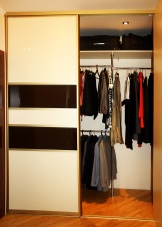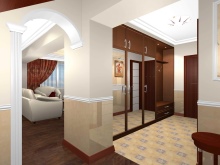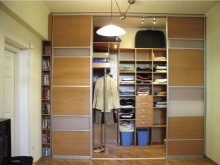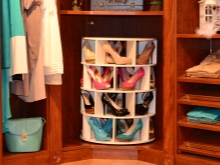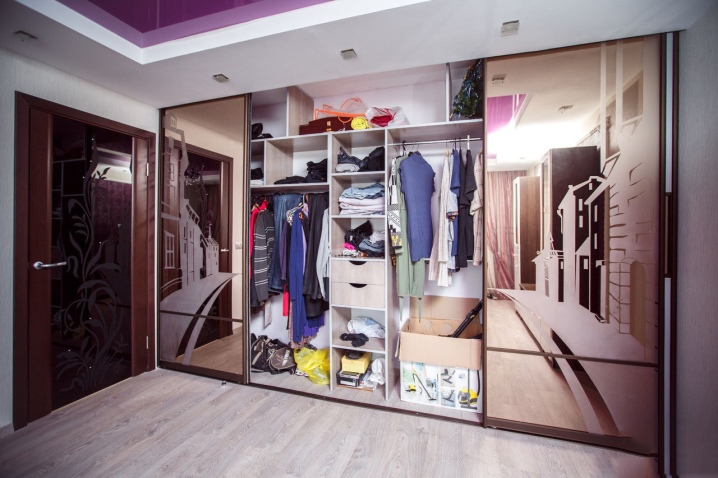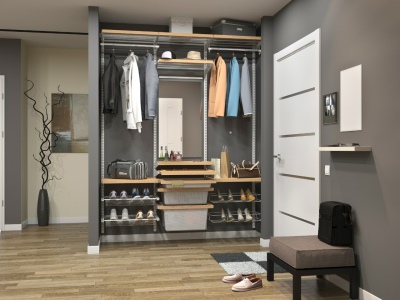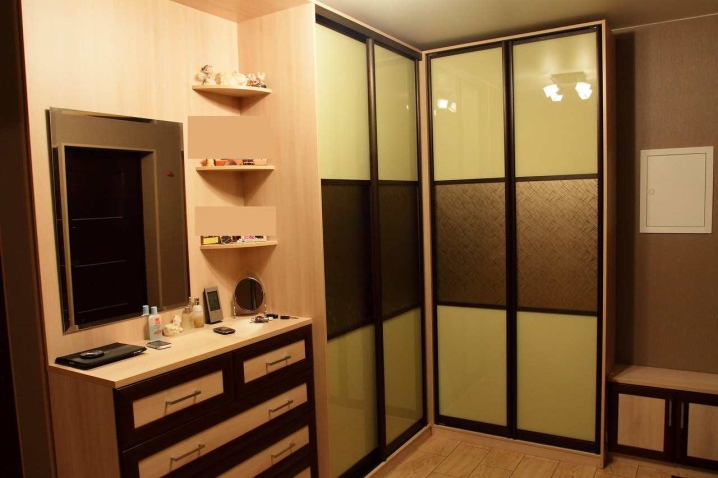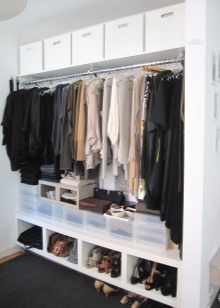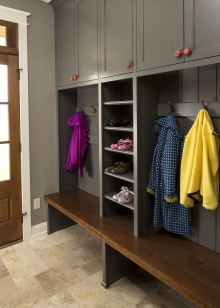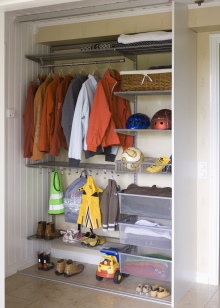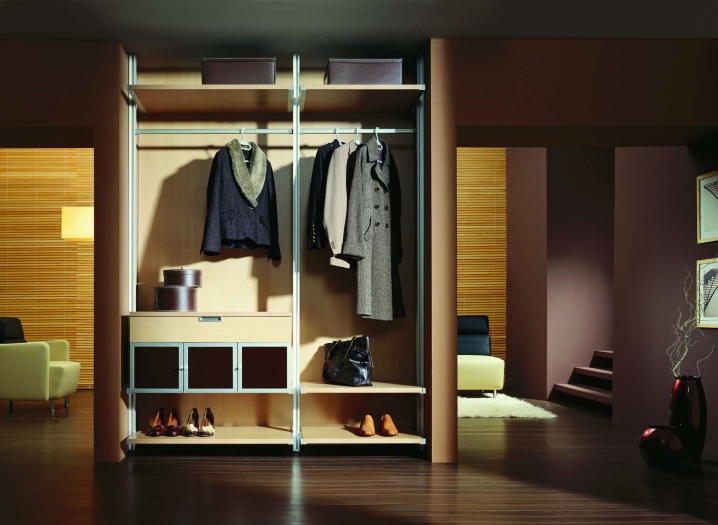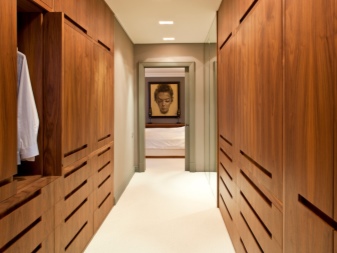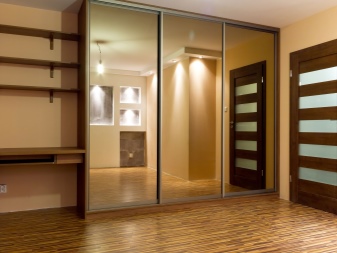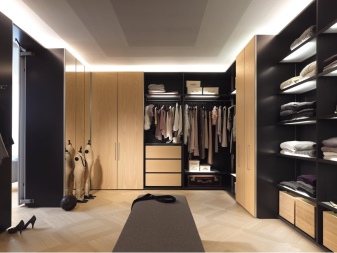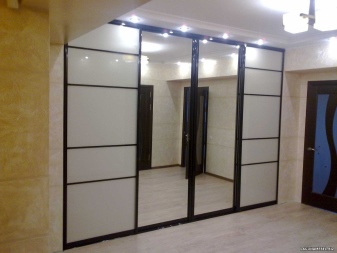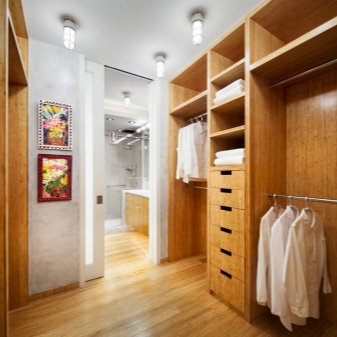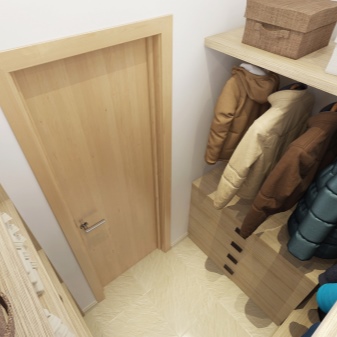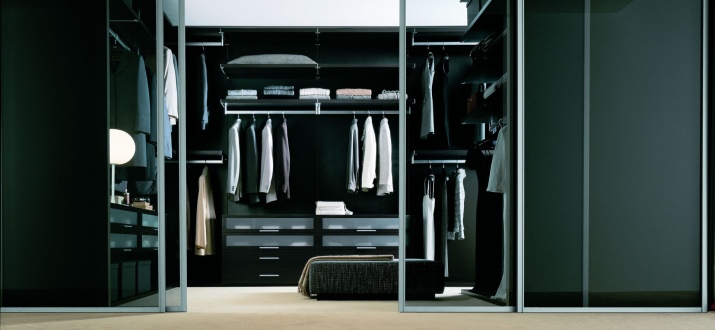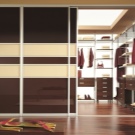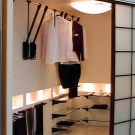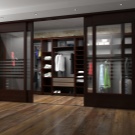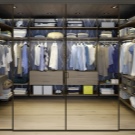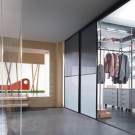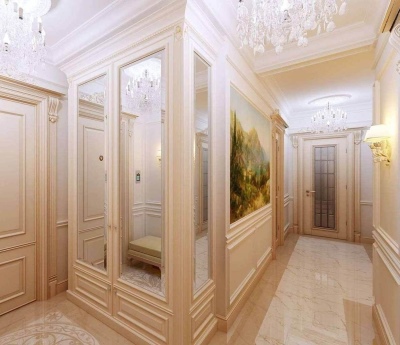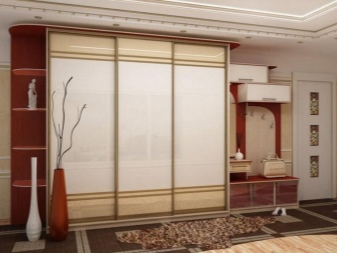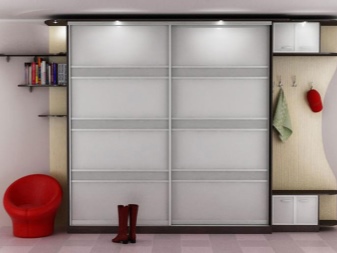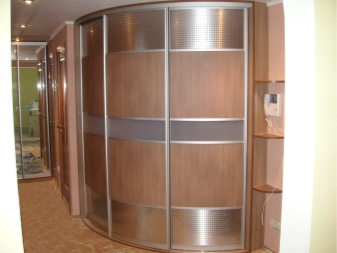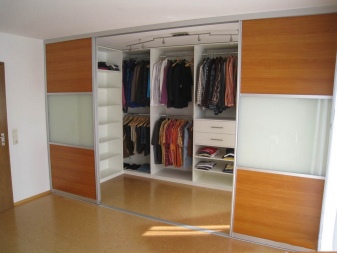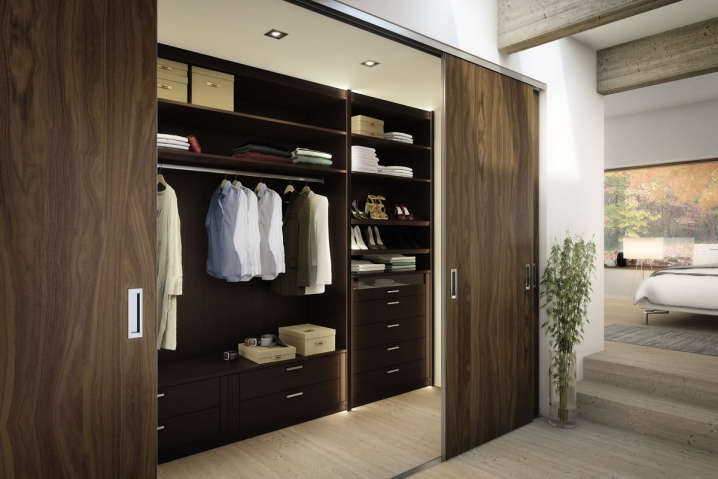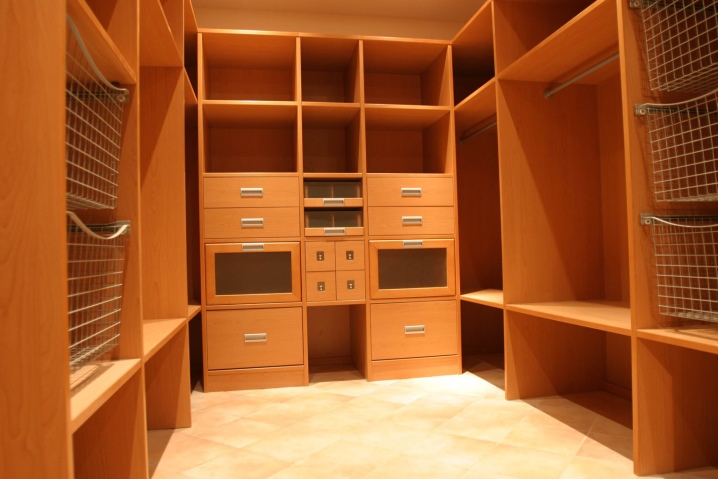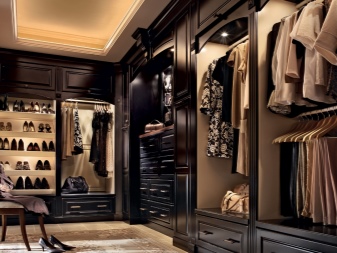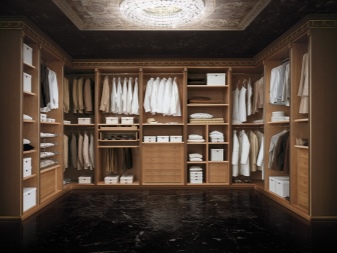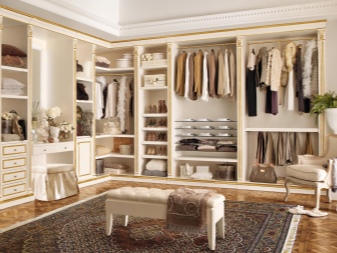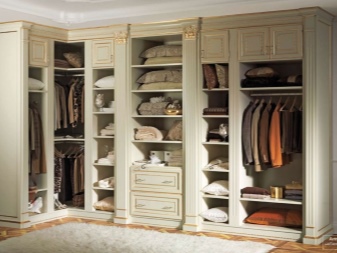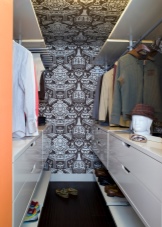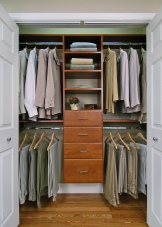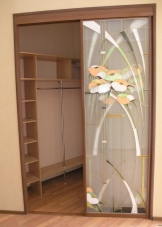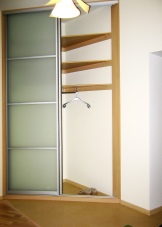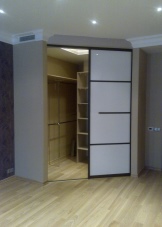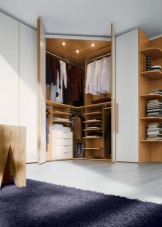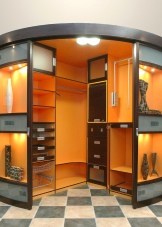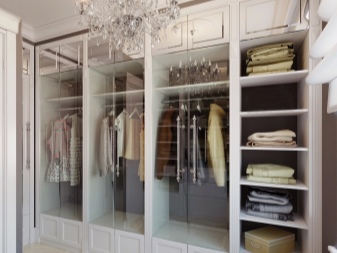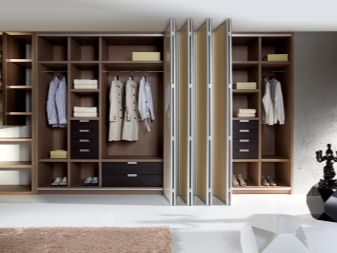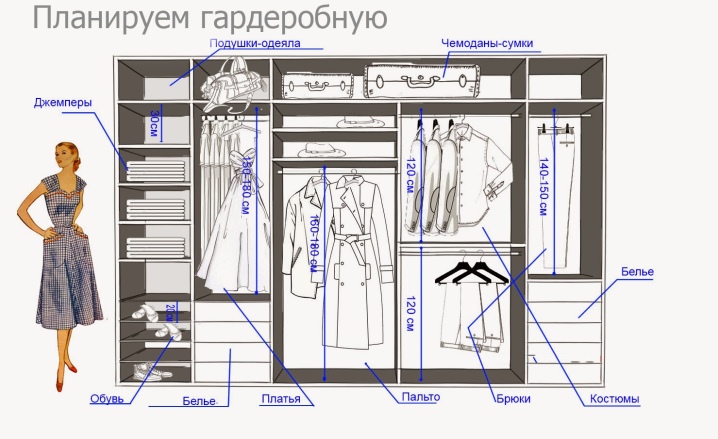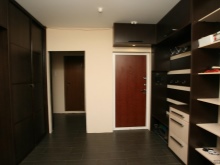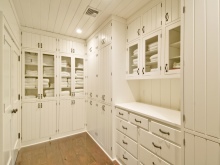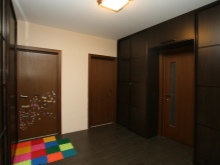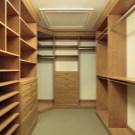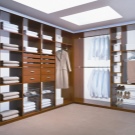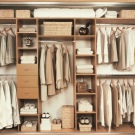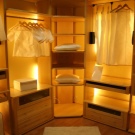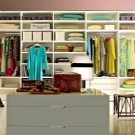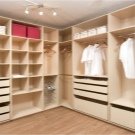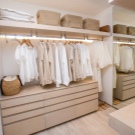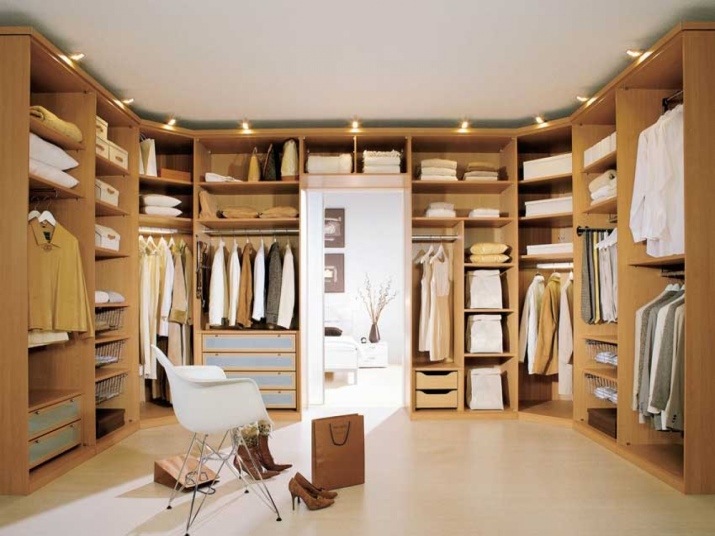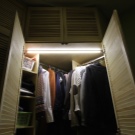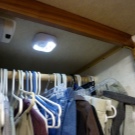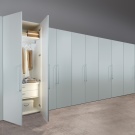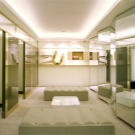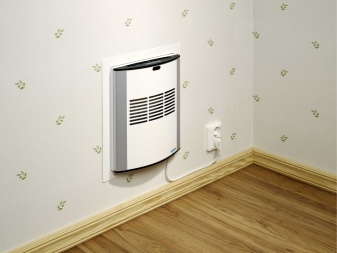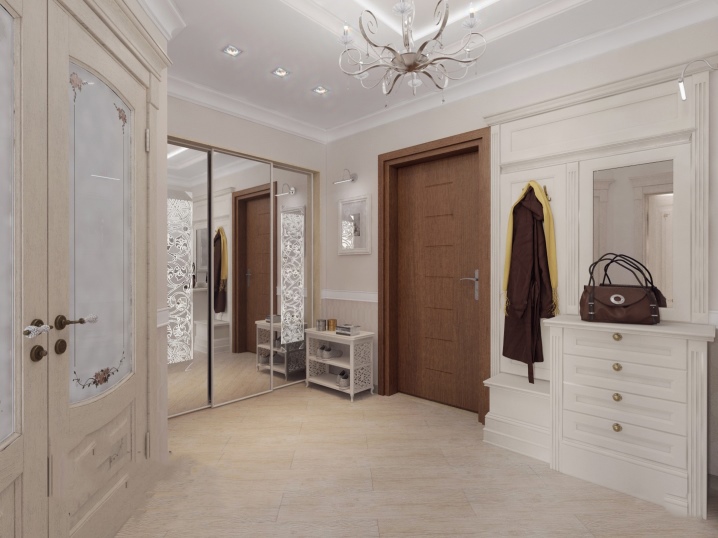Dressing room in the hallway
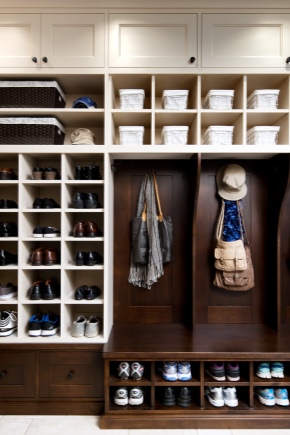
A wardrobe room is the best option for neatly placing and storing clothes, shoes and other things. It can be spacious or tiny, have a different shape, content, design and location. However, the hallway is the most familiar and convenient place for a dressing room.
Features and benefits
A wardrobe can be a whole room or a small closet. And in fact, and in another case, it has a number of its features and advantages:
- Compactness. A small, neat wardrobe can even fit in the hallway of a very modest size.Most often, built-in models are used for this purpose.
- Availability. The modern variety of construction and finishing materials allows you to create very inexpensive models that do not hit hard on the family budget and, at the same time, they will perfectly cope with the tasks assigned to them.
- Convenience. A wardrobe is a place for simultaneous storage of a wide variety of things (clothes, shoes, gloves, hats, umbrellas, bags). It is much more convenient when all these items are in one place, and not laid out on different shelves, pedestals, racks, as often happens.
In addition to these things in the wardrobe it is possible to store household and sports equipment.
The advantages of a dressing room are:
- Aesthetics. Thanks to the work of designers, today everyone has the unique opportunity to beautifully, originally, creatively decorate his entrance hall with a piece of furniture, which also performs a substantial functional load.
- Practicality. Dressing rooms are usually made of very durable, durable, wear-resistant materials that do not require too complex maintenance.
- Room adjustment. The built-in wardrobe will be an ideal solution for filling a niche or a small pantry, which was not planned to be used differently. A wardrobe can perfectly mask the irregularities and flaws of the wall. The mirror decorating the furniture facade will add light to the small room and visually expand it.
In addition to the advantages, there are several disadvantages:
- The inability to transfer the built-in wardrobe to another place;
- The complexity of installation (built-in model);
- Despite the compactness, the wardrobe takes up enough space. This is especially noticeable within a narrow or small corridor.
Kinds
Dressing rooms may differ from each other in several ways (configuration, size, design, content, material, decor).
Corner wardrobe
This option is most often used in hallways of small size. Often it is the only optimal option for the arrangement, corridor "Khrushchev", for example. Properly thoughtful inner filling allows you to accurately and most efficiently place the clothes of all households.
In order for the structure not to look too cumbersome, the internal system must combine open and closed modules, compartments, drawers, shelves.
Open closet
Open closet.It is used for hallways of different sizes, but it is preferable for small rooms. One of the advantages of this design is the feeling of free, bright space.
However, do not forget that all things and clothes will be open to prying eyes all the time.
Such a system consists of wooden or plastic shelves, spacious open shelves (in the lower part there can be several shelves with doors), wicker baskets, and drawers. Along the shelves or drawers with shoes you can arrange a small soft sofa or pouf. Very often, an open-type dressing room is a smooth continuation of a room, which is why it is designed in the same style as it.
Closed wardrobe
This storage system looks great in spacious rooms. The wardrobe may be quite small or have several sections isolated from each other. The advantages of this type are obvious - things are laid out in a neat order, hidden from prying eyes, they are not covered by dust from outside.
If a closed dressing room is not just a closet, but a whole room, then it will be convenient to try on a new outfit or change clothes. Dressing room can be equipped with hinged or sliding doors.
The first option looks perfect in a classic interior. Of course, hinged doors require a large space, but they can be given an original and stylish look with the help of interesting decorative objects or beautiful accessories.
Sliding doors do not “eat up” the space, they are convenient to use, and their wide, even and smooth surface can be an excellent basis for various decor options.
Built in wardrobe
The built-in wardrobe has a number of advantages over the body counterparts. Among them:
- The cost of construction is significantly lower due to the saving of material on the frame, which is often replaced by walls, the ceiling and the floor of the storeroom or niche itself.
- Sustainability. It is impossible to overturn a niche, which is not the case with a separate cabinet.
- The feeling of a holistic, monolithic design. All the wardrobe elements are very tightly fitted to each other and to the room itself. In addition, a wardrobe arranged in a niche or pantry visually enlarges a small space.
- Organic. The built-in wardrobe fits perfectly into any interior.
- The optimality.An option with a built-in wardrobe can sometimes be the only option for a room with a complex architectural form.
There are few disadvantages, but they are:
- The inability to use the standard design (built-in wardrobes are made individually for a specific niche size);
- Difficulty in installation and assembly.
Materials
Today there are almost no restrictions on the choice of materials for the creation and decoration of the dressing room. It can be budget and luxury options for every taste and budget. Among the most used materials today: laminated chipboard, MDF, natural wood, metal, plastic, glass, mirror.
The most original look models, made in combination with several different texture materials, such as wood and glass, plastic and photo wallpaper.
Wood is a wonderful natural material that has long been very popular in the construction and decoration of houses, furniture, interior design. Today, few people prefer to use an array to create dressing rooms, choosing more budget materials.
However, it is almost impossible to replace the noble, beautiful, durable, “living” wood with its unique smell and healing properties.
Dressing rooms from the massif of an oak, a beech, an alder, an ash-tree, a pine, a maple are made to order. Such models have a number of advantages:
- Durability, durability;
- Excellent decorative properties;
- Environmental friendliness, safety.
Wood is a very malleable material. From it you can create the most complex in architectural terms, designs and carved decorative elements. It looks great in its natural form and is suitable for dyeing, pasting, toning, artificial aging.
Wooden wardrobe in any interior looks appropriate, expensive and dignified.
Accommodation options
Place a dressing room in the hallway or hallway can be different. It all depends on its layout, size, design project, the dimensions of the furniture itself:
- In a niche. Such an architectural element as a niche helps to create a separate, compact and perfectly organized dressing room, even in a one-room apartment. Of course, it should match the style and color of the interior hallway.
The doors in the niche can be sliding, swing, folding (like accordion) or swinging.
- If the design of the pantry or niche is not provided, then the wardrobe can be arranged in the empty corner of the hallway. Even a small cupboard will do its job perfectly, as long as it is as tall as possible. On the top shelf you can arrange hats, bags, suitcases, boxes with seasonal items.
- If the dimensions of the hallway allow, the wardrobe system can be positioned along one of the walls. It may consist of a wardrobe, open or closed shelving, mezzanine and other elements.
Space organization
The general view of the dressing room and its usability depend on how well the space is organized and the smallest details are thought out.
- Planning begins with the design of the largest and longest compartments for clothes. Shelves, boxes, baskets are designed on the residual basis.
- The depth of a standard shelf usually does not exceed 1 meter. Larger shelves should be retractable.
- The length of the bar under the hangers should not be more than 1-1.2 meters due to the possibility of sagging under heavy outer clothing.
- The passage between the racks should not be less than 60 cm, and if the design features include drawers and shelves, then for comfortable use you should add about another half a meter.
As for the design, the dressing room should be in harmony with the general interior of the hallway. Always appropriate classics - natural materials, traditional colors, mirror design.
Internal filling
Properly organized interior space of the wardrobe will help you to beautifully and gently spread out and hang out the necessary clothes, underwear, shoes and other things.
Among the main functional elements that will help to cope with this task are the following:
- Rod or pantograph (for placement of hangers with clothes);
- Brunette women and skirts;
- Boxes;
- Shelves;
- Baskets;
- Hangers for ties, umbrellas, belts;
- Section for storage of household and sports equipment.
Boxes, shelves, baskets are used for storing bed linen and underwear, other things. They can be solid or cellular, open and closed, stationary and retractable.
The lower tier is used for storing shoes, the upper - for hats, bedding.
Settlement Tips
In order to properly equip a dressing room, it is necessary to pay attention not only to the design, materials, but also to such important things as lighting and ventilation:
- Lighting. Ideal - spotlights, giving a bright, diffused light. Bulk chandeliers are undesirable to use - they will “eat up” an already small space, they can be accidentally touched by hand when trying on clothes.
- Ventilation. Constant air circulation is necessary to protect clothing from unpleasant odors. You can consider the option with a small air conditioner or fan.
The materials from which the wardrobe will be made should be practical and do not require special care, because there will be brought particles of water and street dirt.
You should not overload the room with an abundance of decor. Dressing room, first of all, should perform its functional tasks. Mirror, frosted glass, sandblasted ornament, lacquer, lacobel, inserts made of bamboo or rattan - these modern finishing materials will help to decorate the room in a stylish, elegant and original way.
